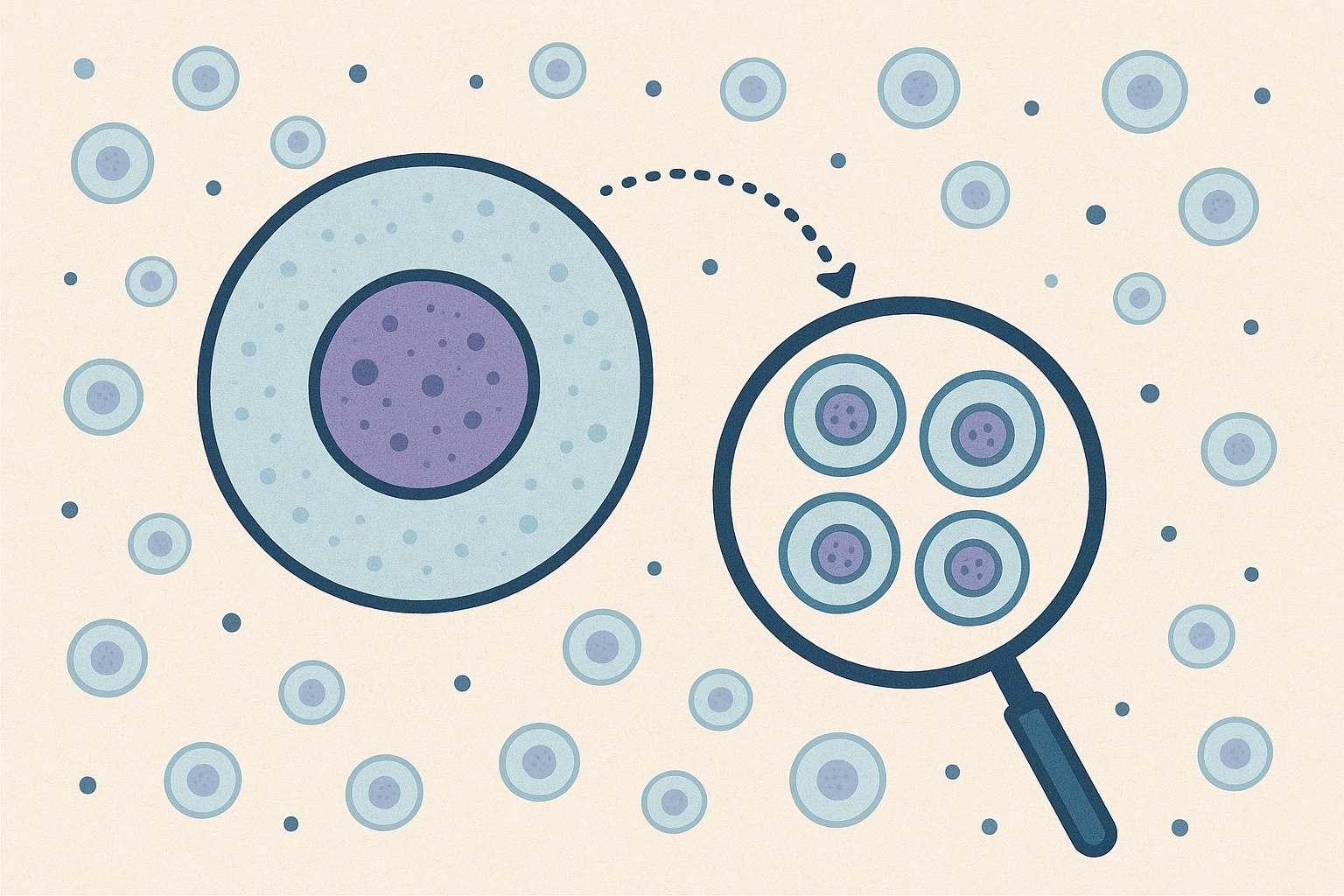FAQ
1. Is single-cell technology safe for patients and research subjects?
Yes, single-cell technology is generally considered safe because it primarily involves the analysis of cells collected from standard medical procedures (like blood draws or biopsies). The technology itself is applied to cells outside the body, so it does not pose direct risks to patients.
2. How does single-cell technology impact patient privacy?
Single-cell data can be highly detailed and personal. As with all genetic and molecular data, there are strict regulations and ethical guidelines to protect patient privacy. Data is anonymized and securely stored, but the public should be aware of ongoing debates about data ownership and consent.
3. Can single-cell technology be used in non-medical fields?
Absolutely. Beyond medicine, single-cell analysis is used in agriculture (e.g., crop improvement), environmental science (e.g., studying microbial diversity), and biotechnology.
Reference
1. Wen, L., Li, G., Huang, T., et al. (2022). Single-cell technologies: From research to application. The Innovation, 3(6), 100342.
2. Ke, M., Elshenawy, B., Sheldon, H., et al. (2022). Single cell RNA‐sequencing: A powerful yet still challenging technology to study cellular heterogeneity. Bioessays, 44(11), 2200084.
3. Zhang, A., Zou, J., Xi, Y., et al. (2024). Single-cell technology for drug discovery and development. Frontiers in Drug Discovery, 4, 1459962.
4. Seah, Y. F. S., Hu, H., & Merten, C. A. (2018). Microfluidic single-cell technology in immunology and antibody screening. Molecular aspects of medicine, 59, 47-61.
5. Choi, J. R. (2020). Advances in single cell technologies in immunology. Biotechniques, 69(3), 226-236.
6. Nagasawa, S., Kashima, Y., Suzuki, A., et al. (2021). Single-cell and spatial analyses of cancer cells: toward elucidating the molecular mechanisms of clonal evolution and drug resistance acquisition. Inflammation and Regeneration, 41, 1-15.
7. Kolodziejczyk, A. A., Kim, J. K., Svensson, V., et al. (2015). The technology and biology of single-cell RNA sequencing. Molecular cell, 58(4), 610-620.
8. Hashimshony, T., Senderovich, N., Avital, G., et al. (2016). CEL-Seq2: sensitive highly-multiplexed single-cell RNA-Seq. Genome biology, 17, 1-7.
9. Zhou, Z., Ye, C., Wang, J., et al. (2020). Surface protein imputation from single cell transcriptomes by deep neural networks. Nature communications, 11(1), 651.
10. Li, Z., Kuppe, C., Ziegler, S., et al. (2021). Chromatin-accessibility estimation from single-cell ATAC-seq data with scOpen. Nature communications, 12(1), 6386.
11. Kelly, R. T. (2020). Single-cell proteomics: progress and prospects. Molecular & Cellular Proteomics, 19(11), 1739-1748.
12. Mazan-Mamczarz, K., Ha, J., De, S., et al. (2022). Single-cell analysis of the transcriptome and epigenome. In Computational Systems Biology in Medicine and Biotechnology: Methods and Protocols (pp. 21-60). New York, NY: Springer US.
13. Lanekoff, I., Sharma, V. V., & Marques, C. (2022). Single-cell metabolomics: where are we and where are we going? Current opinion in biotechnology, 75, 102693.
14. Rao, A., Barkley, D., França, G. S., et al. (2021). Exploring tissue architecture using spatial transcriptomics. Nature, 596(7871), 211-220.
15. Janesick, A., Shelansky, R., Gottscho, A. D., et al. (2023). High resolution mapping of the tumor microenvironment using integrated single-cell, spatial and in situ analysis. Nature communications, 14(1), 8353.
16. Zhang, M., Eichhorn, S. W., Zingg, B., et al. (2021). Spatially resolved cell atlas of the mouse primary motor cortex by MERFISH. Nature, 598(7879), 137-143.
17. Rodriques, S. G., Stickels, R. R., Goeva, A., et al. (2019). Slide-seq: A scalable technology for measuring genome-wide expression at high spatial resolution. Science, 363(6434), 1463-1467.
18. Piwecka, M., Rajewsky, N., & Rybak-Wolf, A. (2023). Single-cell and spatial transcriptomics: deciphering brain complexity in health and disease. Nature Reviews Neurology, 19(6), 346-362.
19. Liang, S. B., & Fu, L. W. (2017). Application of single-cell technology in cancer research. Biotechnology advances, 35(4), 443-449.
20. Herderschee, J., Fenwick, C., Pantaleo, G., et al. (2015). Emerging single-cell technologies in immunology. Journal of Leucocyte Biology, 98(1), 23-32.
21. Jovic, D., Liang, X., Zeng, H., et al. (2022). Single‐cell RNA sequencing technologies and applications: A brief overview. Clinical and translational medicine, 12(3), e694.
22. Marioni, J. C., & Arendt, D. (2017). How single-cell genomics is changing evolutionary and developmental biology. Annual review of cell and developmental biology, 33(1), 537-553.
23. Hoppe, P. S., Coutu, D. L., & Schroeder, T. (2014). Single-cell technologies sharpen up mammalian stem cell research. Nature cell biology, 16(10), 919-927.
24. Liu, B., Hu, S., & Wang, X. (2024). Applications of single-cell technologies in drug discovery for tumor treatment. Iscience, 27(8), 110486.
25. Zhang, S., Jiang, V. C., Han, G., et al. (2021). Longitudinal single-cell profiling reveals molecular heterogeneity and tumor-immune evolution in refractory mantle cell lymphoma. Nature communications, 12(1), 2877.
26. Herderschee, J., Fenwick, C., Pantaleo, G., et al. (2015). Emerging single-cell technologies in immunology. Journal of Leucocyte Biology, 98(1), 23-32.
